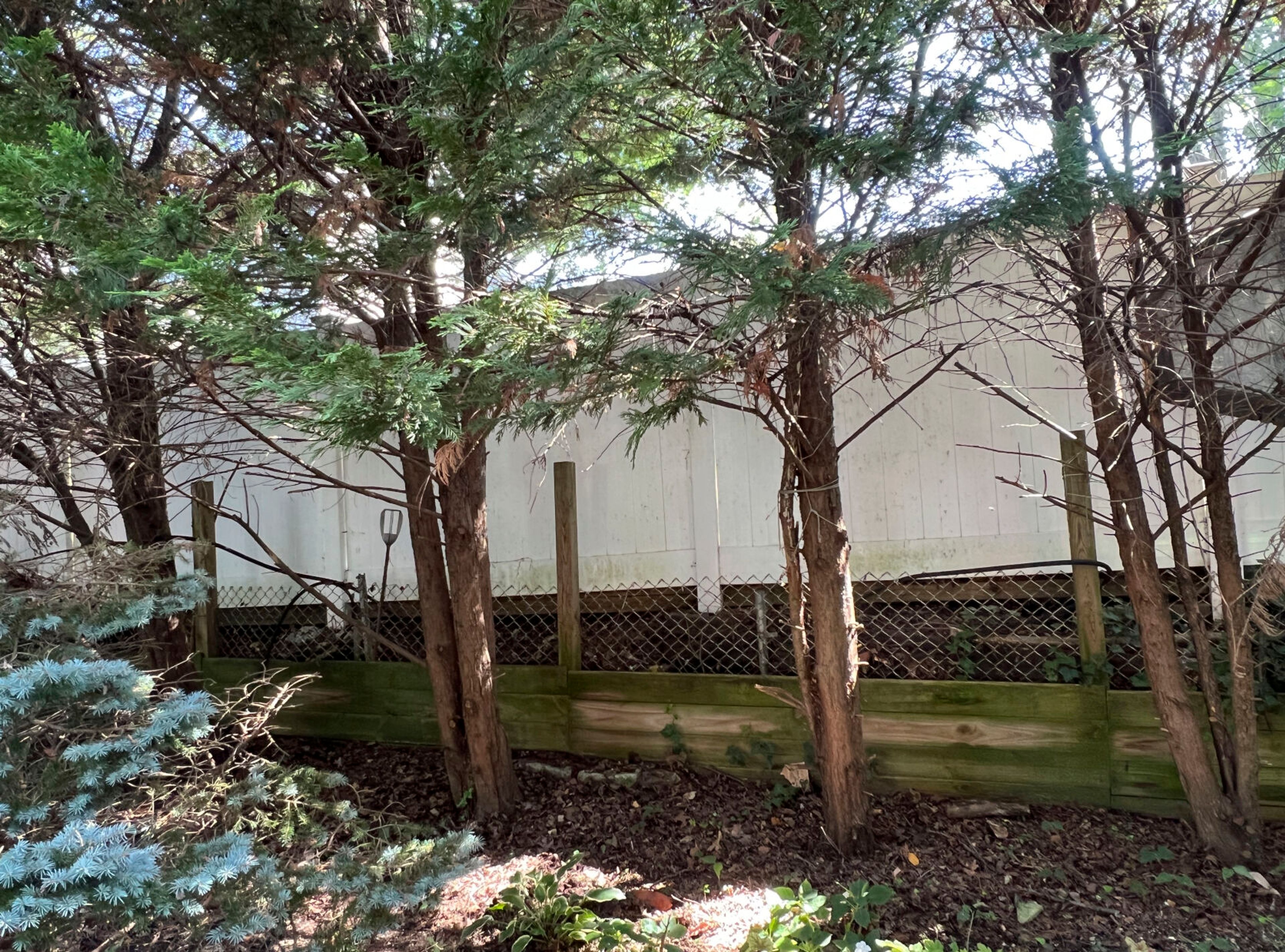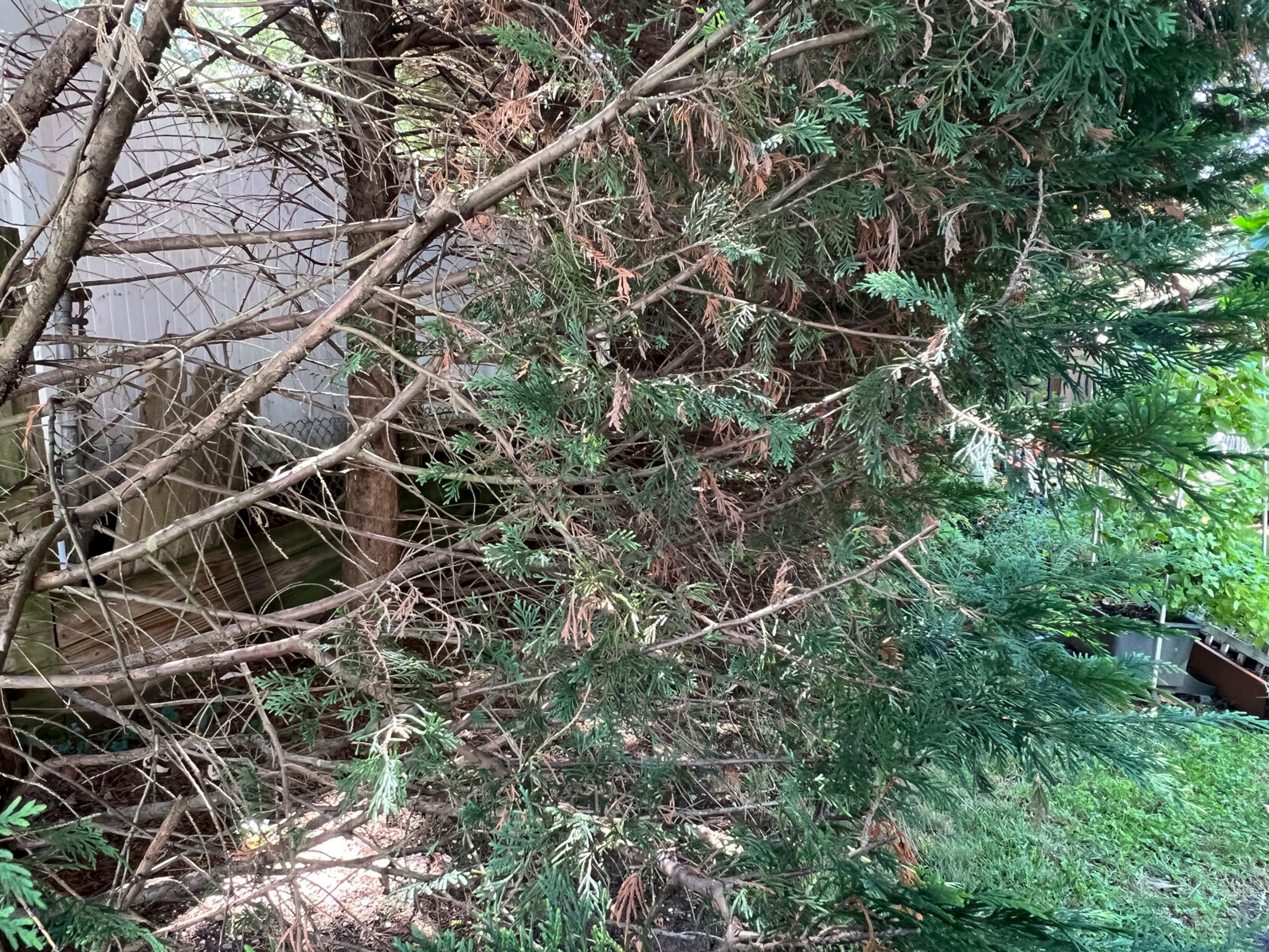Damiano: How to fill in those bare spaces after pruner’s remorse
After 20 years of growth, some of the ever-widening, 40-foot-tall Leyland cypress trees running along my backyard property line are blocking the walkway.
A simple trim is not an option because only the outermost foot or two of each branch is needled, and more than that would have to be removed to allow unencumbered foot traffic. That would expose bare branches, which would be an eyesore, both figuratively and potentially literally, as the remaining sticklike appendages would pose an ocular hazard to passersby.
So, the only remaining option is to completely remove the branches from the bottom 6 feet of each tree, revealing the trees’ trunks and the fence they were planted to hide.
I accept responsibility for the debacle because it should have occurred to my younger, less-experienced self that the behemoth trees would create an obstacle after a couple of decades. Alas, it did not. So now I’m left to mutilate them and contemplate what to plant to hide their unsightly, naked trunks and the fence behind them.
Fall’s a good time to plant an understory
When the innermost needles of evergreen trees and shrubs drop, there’s usually no need to panic. It’s a normal part of aging because of insufficient sunlight and diminished nutrient circulation. However, care should be taken never to prune into that bare area, as the baldness is permanent, and those bare branches will never sprout new growth.
In addition, pruning should always aim to retain a pyramidical shape, wider at the bottom than at the top, to ensure all plant parts receive sunlight for continued growth and vigor.
If you are currently experiencing pruning remorse or are reluctantly tasked with an amputation, as I am, the only way to hide the resulting atrocity would be to add an understory layer of plants. Fortunately, early fall is the ideal time to plant many of them.
Choose species that will thrive in the dappled shade cast by the evergreens towering above them, and confirm they will thrive in your horticultural zone, and with your garden’s soil pH and moisture levels.
What plants to choose
Filling the gap can be as simple as placing large containers of vining annuals (or tender perennials) on the soil under and between the trees.
Climbing nasturtiums (Tropaeolum majus), purple bell vine (Rhodochiton atrosanguineus) and black-eyed Susan vine (Thunbergia alata; avoid in Southern states, where it is considered invasive) will quickly fill the void and grow up the tree’s trunk, providing lush, almost instant, gratification for one growing season. The temporary nature of annuals will allow you to easily and economically swap them out for others in subsequent years as your whim dictates.
I’m considering something more permanent, however. And although many exotic shrubs, such as Rhododendron and Japanese plum yew, would serve the purpose, I’m focusing my search on native plants, which will require less water, fertilizer and attention, and provide food and habitat for birds, essential pollinators and other beneficial insects.
Maybe a trio of showy pink muhly grasses (Muhlenbergia capillaris), native from Massachusetts to Florida and west to Kansas through Texas and into Mexico. Or, perhaps the North American native smooth or oakleaf hydrangea.
Then there’s ninebark (Physocarpus opulifolius), an eye-catching shrub native to Eastern and Central North America that boasts pink or white flowers in early summer and colorful foliage from spring through fall.
Western gardeners seeking a native option can rely on the beloved manzanita ‘Panchito’ (Arctostaphylos x coloradoensis) to fill smaller areas.
There may even be a silver lining: Understory plants could be just what my boring tree line needs.
Damiano writes regularly about gardening for The Associated Press. She may be contacted at jessica@jessicadamiano.com.










